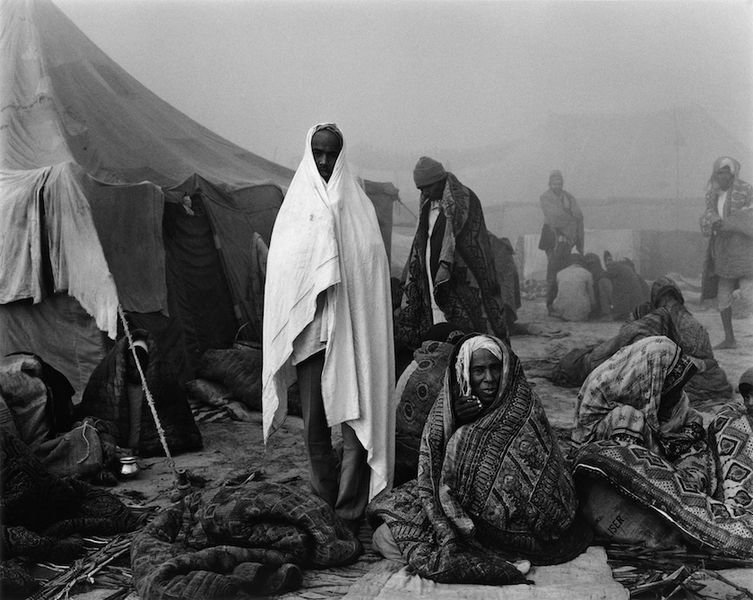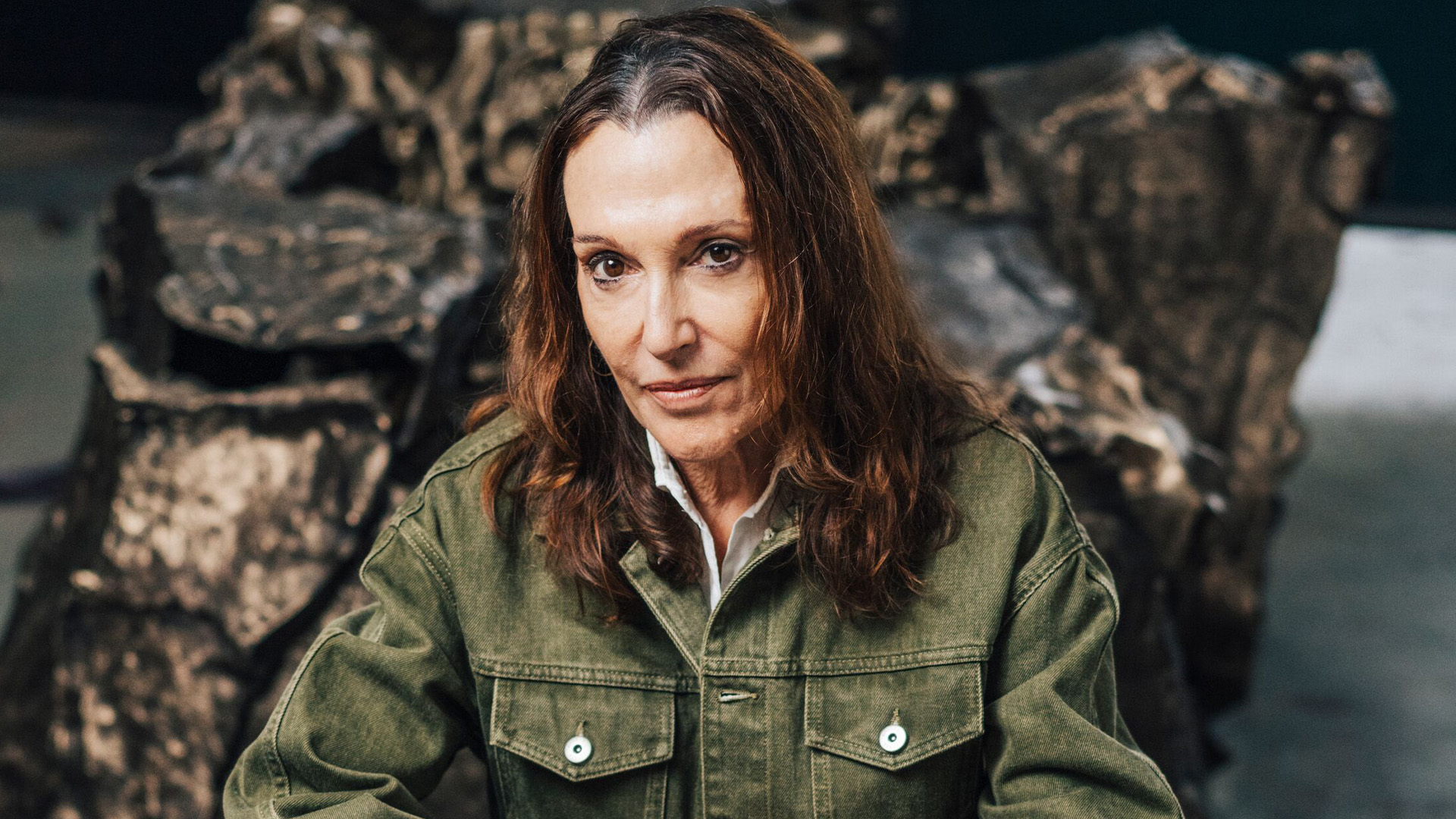Don McCullin

Don McCullin, 'Dew pond, Somerset', 1988 © Don McCullin / Contact Press Images
Don McCullin
This resource has been produced to accompany the exhibition, ‘Don McCullin. Conflict – People – Landscape’, at Hauser & Wirth Somerset.
About Don McCullin
Don McCullin was born in Finsbury Park in London in 1935. He left school at 15 without any qualifications. He signed up to National Service in the RAF, and quickly became a photographic assistant working on aerial reconnaissance photography. In 1959, The Observer gave him his first professional break by publishing his photograph of a London gang. Between 1966 and 1984, he worked for The Sunday Times Magazine and released some of his most celebrated images. McCullin is particularly recognised for his war photography and has covered conflicts across the globe including in Vietnam, Cyprus, Iraq, Cambodia, Lebanon and Northern Ireland.
He has specialised in critical social documentation, and his images of urban struggles have depicted the unemployed, poor and deprived. In 1993 McCullin was the first photojournalist to be made a Commander of the British Empire (CBE), he is the author of more than a dozen books, and is recognised as one of the greatest war photographers in history. In 2011 alongside Hamiltons Gallery’s exhibition of his platinum prints, the Tate Britain presented a solo exhibition comprising a wide selection of his subjects, and the Imperial War Museum displayed ‘Shaped By War’, featuring over 250 photographs, contact sheets and personal memorabilia. In 2013, McCullin was honored with an exhibition at Visa pour l’Image, the International Festival of Photojournalism in Perpignan. Don McCullin now lives in Somerset; he is married and has five children from his current and earlier marriages.
What does his work look like?
The photographs in this exhibition provide an insight into his whole career as a photographer. From his early beginnings in North London, such as ‘The Guvnors in their Sunday Suits, Finsbury Park, London’ (1958), which is an example of his extensive social documentary to his unsettling war photography, such as, ‘Shell shocked US Marine, Hue’ (1968), to landscapes and still life, such as, ‘Dew Pond, Somerset’ (1988). Don McCullin is a photojournalist and his choice of subjects are the atrocities of war and human struggles therefore, they may be considered disturbing or difficult for some to view.

Don McCullin, 'Tormented, Homeless Irishman, Spitalfields', 1969 © Don McCullin / Contact Press Images
Why does he take his photographs?
Don McCullin uses the photographic image to bring his audience almost unbearably close to the experience of people living under conditions that we can hardly imagine. His work mainly documents the second part of a century dominated by war, mass emigration, famine and political upheaval. Despite this condition being on a huge global scale, his photographs focus on the individual men, women and children who are affected.
How does he make his photographs?
McCullin learned his trade in the Royal Air Force in the 1950s, during which time he was deployed in the Suez, Kenya and Cyprus. As a photojournalist for national newspapers he was assigned to travel to and photographically document conflicts such as the Vietnam War, Northern Irish ‘Troubles’, the construction of the Berlin Wall and most recently the war in Aleppo, Syria. McCullin’s photographs are nearly always taken in black and white on a manual camera using film, which allows him to control the aperture, shutter speed and other camera settings. This allows for control over the brightness, focus, depth of field and exposure of the image as well as making decisions such as whether to zoom in to create a close up or instead to take a long or medium shot. Camera film was traditionally developed by hand in a dark room and the photographer could then make decisions to crop or frame images as well as adjust the contrast between the brightest and darkest parts in an image, Don still does this himself for the majority of his images. When photographing in war zones, Don McCullin took huge risks to record images. He was threatened with a knife at a Muslim checkpoint in Beirut for having a Falangist press pass, temporarily blinded by CS gas during a riot in Derry, and wounded by fragments of mortar shell in Cambodia. In this exhibition we have the Nikon camera that notoriously saved his life from a sniper bullet during the Vietnam War.
How does he title his work?
This exhibition is called ‘Conflict – People – Landscape’. The titles of all of McCullin’s photographs simply state the subject depicted, for example, ‘Tormented, homeless Irishman, Spitalfields, London’ (1969).
Does he work in any other ways?
In recent years he continued to travel internationally, including to India and Syria, photographing and printing new works. However, many of his later photographs are landscapes taken in Somerset. He is the author of a number of books, including ‘The Palestinians’ (with Jonathan Dimbleby, 1980), ‘Beirut: A City in Crisis’ (1983), and ‘Don McCullin in Africa’ (2005). ‘Shaped by War’ (2010), was published to accompany a major retrospective exhibition at the Imperial War Museum North, Salford, England in 2010 and then at the Victoria Art Gallery, Bath and the Imperial War Museum, London, and, ‘Southern Frontiers: A Journey Across the Roman Empire’ (2010). In 2012, a documentary film of his life titled McCullin and directed by David Morris and Jacqui Morris was released. The film was nominated for two BAFTA awards.
What other artists’ work does it relate to?
Don McCullin is best described as a war photographer. Since the invention of photography in the 1830s it has continually been used to capture events that can raise public awareness. Roger Fenton is known as one of the first war photographers alongside Felice Beato, other well known war photographers include Robert Capa, Eddie Adams and Nick Ut. Before the invention of photography war artists were mainly painters such as Goya and Manet, although some artists continued to work in traditional media such as WW2 artists, Wyndham Lewis, Stanley Spencer, Henry Moore and Paul Nash for example.
Summary
Don McCullin’s retrospective at Hauser & Wirth Somerset shows how he has developed from somebody who always wanted to be right there in the action to somebody who is now more contemplative about war and how it affected him and the people he photographed. He has worked closely with Hauser & Wirth Somerset on the selection of the images exhibited, believing these to be some of the most important photographs from his career. A career which has followed the journey represented by the exhibition, going from photographing soldiers fighting in Vietnam to visiting the Somme 85 years after the battle and finally documenting his local landscape.

Don McCullin, 'Early Morning at the Kumbh Mela, Allahabad, India', 1989. © Don McCullin/Contact Press Images
GLOSSARY
Aerial Reconnaissance
Aerial reconnaissance is reconnaissance for a military or strategic purpose that is conducted using reconnaissance aircraft. This role can fulfill a variety of requirements, including the collection of imagery intelligence, observation of enemy maneuvers and artillery spotting.
Aperture
Aperture is the variable opening in the lens that allows light to pass through. It is the main control over depth of field.
Crop
To crop describes the removal of unwanted areas from an image.
Depth of Field
The area of an image in front of and behind the point of focus that appears acceptably sharp is known as the depth of field.
Exposure
The fundamental process of allowing access of light to reach the film or the camera’s sensor for a specific amount of time.
Focus
The point at which the light rays are brought together to produce the sharpest image is called the focus.
Manual Camera
A manual camera gives photographer full control over the aperture, shutter speed and exposure as opposed to automatic in which the camera controls most camera settings.
Photojournalism
Photojournalism is a particular form of journalism (the collecting, editing, and presenting of news material for publication or broadcast) that employs images in order to tell a news story. Photojournalism is distinguished from other close branches of photography (e.g. documentary photography, social documentary photography, street photography or celebrity photography) by complying with a rigid ethical framework which demands that the work is both honest and impartial whilst telling the story in strictly journalistic terms. Photojournalists create pictures that contribute to the news media.
Social Documentary
Social documentary photography involves the recording of people in their natural condition; it is a form of documentary photography. Most often it is used to show the life of underprivileged or disadvantaged people.
War Art
During the 1st and 2nd World Wars artists were commissioned to record events. Sir Kenneth Clarke led the initiative in WW2 that led to the Imperial War Museum showing works produced by war artists. The Imperial War Museum still commissions artists to record wars that involve British soldiers.
War Photography
War photography involves photographing armed conflict and its effects on people and places. Photography was invented in the 1830s and has since been used to record all situations and events in the world to share with others.
Suggested Activities During Your Visit
Note: You will need to bring pencils and a sketchbook.
Activity 1
Make a circle shape by putting your thumbs and fingers together; this is your viewfinder. Look through your viewfinder at parts of the exhibition, find the view you find most interesting and draw it into a circle.
Activity 2
Get into pairs. Most photography in this exhibition is in black & white. Take it in turns to produce a tonal pencil drawing of you partner’s portrait.
Activity 3
Find a partner and ask each other what you think about the exhibition and how it makes you feel. Try describing the work to your partner and getting them to draw a response to your words.
Activity 4
Select an image. Look at the image for a full 60 seconds, without speaking at all. Move away from the image and make notes and sketches to show everything you can remember about the image. See how much detail you can recall, what has been left out or overlooked?
Activity 5
Try sketching an image and extending the drawing beyond the frame to explore what might be outside or around the image. This can be partly imaginative and partly analytical, for example to show the light source or to invent contextual information.
Activity 6
Distribute cards with below words and ask students to apply the word on their card to one work and to explain why.
Document
Anger
War
Beauty
Memory
Alone
Fiction
Fact
Report
Close Up
Narrative
Point of View
Frame
Edit
Silence

Don McCullin, 'Suspected Lumumbist Freedom Fighters Being Tormented Before Execution, Stanleyville, Congo', 1964 © Don McCullin/Contact Press Images
Practical Activity Prompts and Ideas for Discussion Following your Visit
Key Stage 1 and 2
Ask children to bring in old family photographs of an event. Ask them:
Do you think looking at old pictures can tell us things about the past?
What is something you could learn about the past when looking at an old photo?
Key Stage 3
How are primary source documents important in studying history? What kinds of things can photographs tell us about an historical event?
Key Stage 4 and beyond
The ‘frame’ is the boundary around an image; the framing of an image encourages the viewer to ‘read’ the image. A photographer makes decisions about what appears in the frame in order to direct the meaning that they wish to communicate. Discuss ways in which a photographer presents a subjective view in the medium of photography, which we usually consider to present object truth. Choose some examples to illustrate your ideas.
Supplementary Research
‘Don McCullin, Shaped by War’, Jonathon Cape: London, 2010 ‘Don McCullin, Unreasonable Behaviour: An Autobiography with Lewis Chester’, Janathon Caper: London, 2015 Don McCullin in Conversation with Colin Harding, National Media Museum, https://soundcloud.com/ nationalmediamuseum/don-mccullin-in-conversation Don McCullin, https://www.tate.org.uk/art/artists/don-mccullin-7026
Resources
1 / 10









